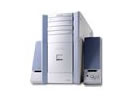'ZDNET Recommends': What exactly does it mean?
ZDNET's recommendations are based on many hours of testing, research, and comparison shopping. We gather data from the best available sources, including vendor and retailer listings as well as other relevant and independent reviews sites. And we pore over customer reviews to find out what matters to real people who already own and use the products and services we’re assessing.
When you click through from our site to a retailer and buy a product or service, we may earn affiliate commissions. This helps support our work, but does not affect what we cover or how, and it does not affect the price you pay. Neither ZDNET nor the author are compensated for these independent reviews. Indeed, we follow strict guidelines that ensure our editorial content is never influenced by advertisers.
ZDNET's editorial team writes on behalf of you, our reader. Our goal is to deliver the most accurate information and the most knowledgeable advice possible in order to help you make smarter buying decisions on tech gear and a wide array of products and services. Our editors thoroughly review and fact-check every article to ensure that our content meets the highest standards. If we have made an error or published misleading information, we will correct or clarify the article. If you see inaccuracies in our content, please report the mistake via this form.
Sony VAIO PCV-RXG408


Sony VAIO PCV-RXG408
pros and cons
- Turnkey video recording solution wide range of media and connectivity options.
- Expensive compared with standard PC/PVR solutions analogue TV only.
- Editors' review
- Specs
Having reviewed several of Sony's VAIO desktops, we've generally been impressed with them. The PCV-RXG408's hardware is an evolution of the RX series, adding a newer processor, a larger hard disk and a rewriteable DVD drive. However, the accompanying software is where this PC really differentiates itself from both its predecessors and its competitors: for Sony has set this system up to be a turnkey personal video recorder (PVR) solution.
Features
The RXG408's specification isn't exactly leading edge, but it's plenty powerful enough for the tasks expected of it. A 2.66GHz Pentium 4 processor is backed by 512MB of DDR SDRAM., while the graphics adapter is an unbadged card fitted with an nVidia GeForce4 MX4600 chip. This features a video out port, as well as analogue VGA and digital DVI connections. This card, which has 64MB of graphics RAM, delivers a 3DMark 2001 score of 6,563 -- respectable but not trailblazing.
To meet the needs of a PVR system, Sony has included a 160GB hard drive, Maxtor's 5400X. On our review machine this was separated in two partitions, giving two logical drives. This helps preserve disk space for applications other than video recording. The 5400X isn't a particularly fast drive, despite its Ultra ATA/133 interface. This won't affect the performance of video recording or playback as it's speedy enough for several video streams, but could make video editing slower than would otherwise be the case.
The RXG408 provides a rewriteable DVD drive and a standard CD-ROM drive. Pioneer's DVR-104VA, which has been included in previous Sony desktops, writes to DVD-RW, DVD-R, CD-RW and CD-R media, as well as reading most optical media.
The built-in audio chipset is rather unsophisticated, but an optical S/PDIF output is included, allowing you to connect the RXG408 to a surround-sound decoder for watching DVD movies. This could also be used to connect up other hi-fi equipment with a digital input, such as a Minidisc recorder.
As with previous RX series desktops, you get a Type II PC Card slot, two FireWire-compatible i.LINK ports and a Memory Stick slot. What's new is that the six USB ports are now high-speed USB 2.0 ports. You'd have to try very hard to find some form of removable media you couldn't connect to this machine.
PVR functionality: GigaPocket
The RXG408 comes with an analogue TV tuner card. Although a digital tuner would have been nice, especially with the advent of the Freeview service, only the UK would currently benefit from such a configuration. The TV card also accepts composite video input, so a camcorder can be connected up to capture your home movies.
The software suite that enables the PVR functionality is called GigaPocket. As well as the GigaPocket viewer, there's a timer recording manager application, GigaPocket Explorer, GigaPocket Server and PicoPlayer, a network client for the server.
The viewer application allows you to watch live TV or recordings on the RXG408, or kick off recording manually. You can also start 'slip play' of a programme you're recording -- that is, watch from where you started recording without stopping the recording taking place. Finally, if you have started recording manually, you can set a time for this to stop -- much like the one-touch record facility on many VCRs.
The timer recording manager allows you to record upcoming programmes, the same way you can with a standard VCR. The analogue tuner means you can only record one programme at a time. You can also timer record from the S-Video or composite inputs so that, for instance, if you have a satellite or cable receiver you can record from that. You will have to set the channel on that receiver separately, though.
GigaPocket Explorer is a recording management program that allows you to delete or rename recordings, or file them in separate 'cabinets'. You can import existing MPEG movie clips into your cabinets, so that, for instance, you can put digital camcorder footage onto the GigaPocket system. Recordings are stored as MPEG files in a standard file system, and you can export these from GigaPocket Explorer to other file formats, such as AVI. Although GigaPocket Explorer doesn't include the ability to write out to DVD-R or -RW directly, you can -- with a little more effort -- archive your recordings to DVD.
The GigaPocket server is a simple affair that simply makes all the recordings in your cabinets available across a network to which the RXG408 is connected. You can password-protect general access to a GigaPocket server, and each video capsule can be given its own password. This isn't quite the same as a full access control system, but it will prevent young children viewing inappropriate recordings. Note that the server doesn't make live TV directly available, since MPEG encoding of the analogue input isn't real-time. What you can do is to set GigaPocket recording the programme you want to watch, and then watch the recording from the remote PC. This means you'll be watching a delayed version of the programme, but it's better than nothing.
To access recordings from a remote PC you need the PicoPlayer player installed -- you can put the installation program on a CD-R or in a shared network location. PicoPlayer is a simple piece of software: you connect to a GigaPocket server by specifying the machine name and supplying a password if necessary. You can then see the available cabinets and capsules in a list, and pick one to view.
PicoPlayer also allows you to create timed recordings, although the procedure is a little unusual: you enter the timings and channel for the recording and save them locally, and then upload them to the GigaPocket server. This makes sense if you have more than one GigaPocket server on your network, but this is unlikely for the time being.
Sony is likely to enable more than just PCs to work with GigaPocket. For example, the client software may be built into TVs, so you won't need a PC in each room to make use of the system.
There are plenty of enhancements that could be made to the GigaPocket system: digital TV reception, electronic programme guide (EPG) integration, adding audio-only capabilities, a handheld client. Some of these would require different parts of Sony to talk to one other (a notoriously difficult thing to achieve), and some could be added by third parties, if the GigaPocket system's APIs were made available.
The VAIO PCV-RXG408 is by no means cheap at £1,364 (ex. VAT), especially as this price doesn't include a monitor. You could create an equivalent system yourself by buying a PC and the PVR components separately, but the advantage of Sony's solution is that it comes preconfigured and has a great range of connectivity options.